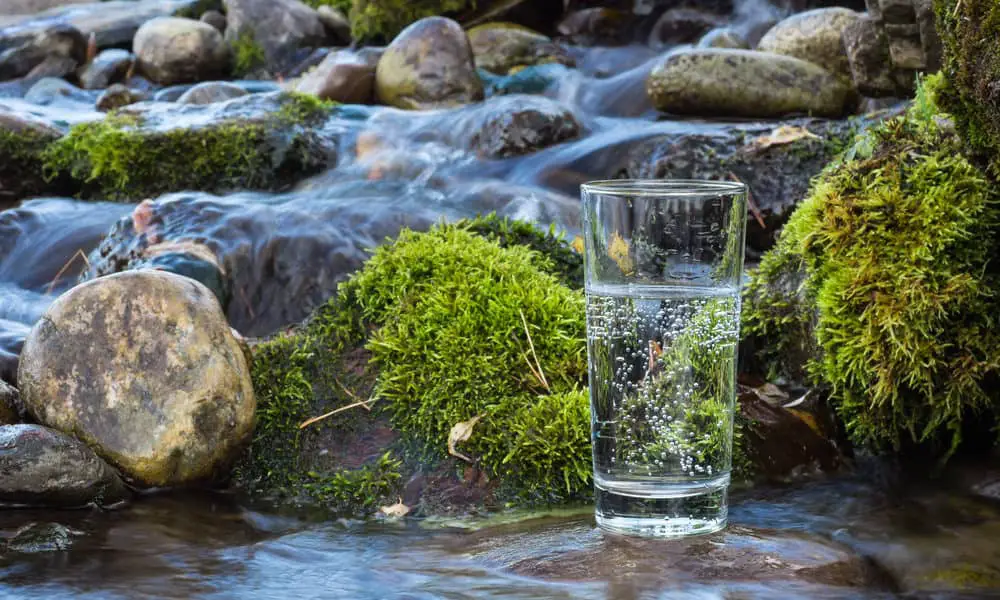We need to drink plenty of water daily to keep our body cells healthy and energized. Most of us know staying hydrated is crucial for our health and well being. But, many of us are not aware of the type and quality of water we drink every day.
Plenty of options are there when it comes to the type of drinking water. As a consumer, we may feel confused to pick the right one from the available options.
One such instance is choosing between spring water and purified water. You should follow the proper guidelines and know the differences while making an informed choice for drinking water.
Let’s dive right in and explore which type of water will suit your tastes better.
Types of Water
Tap Water
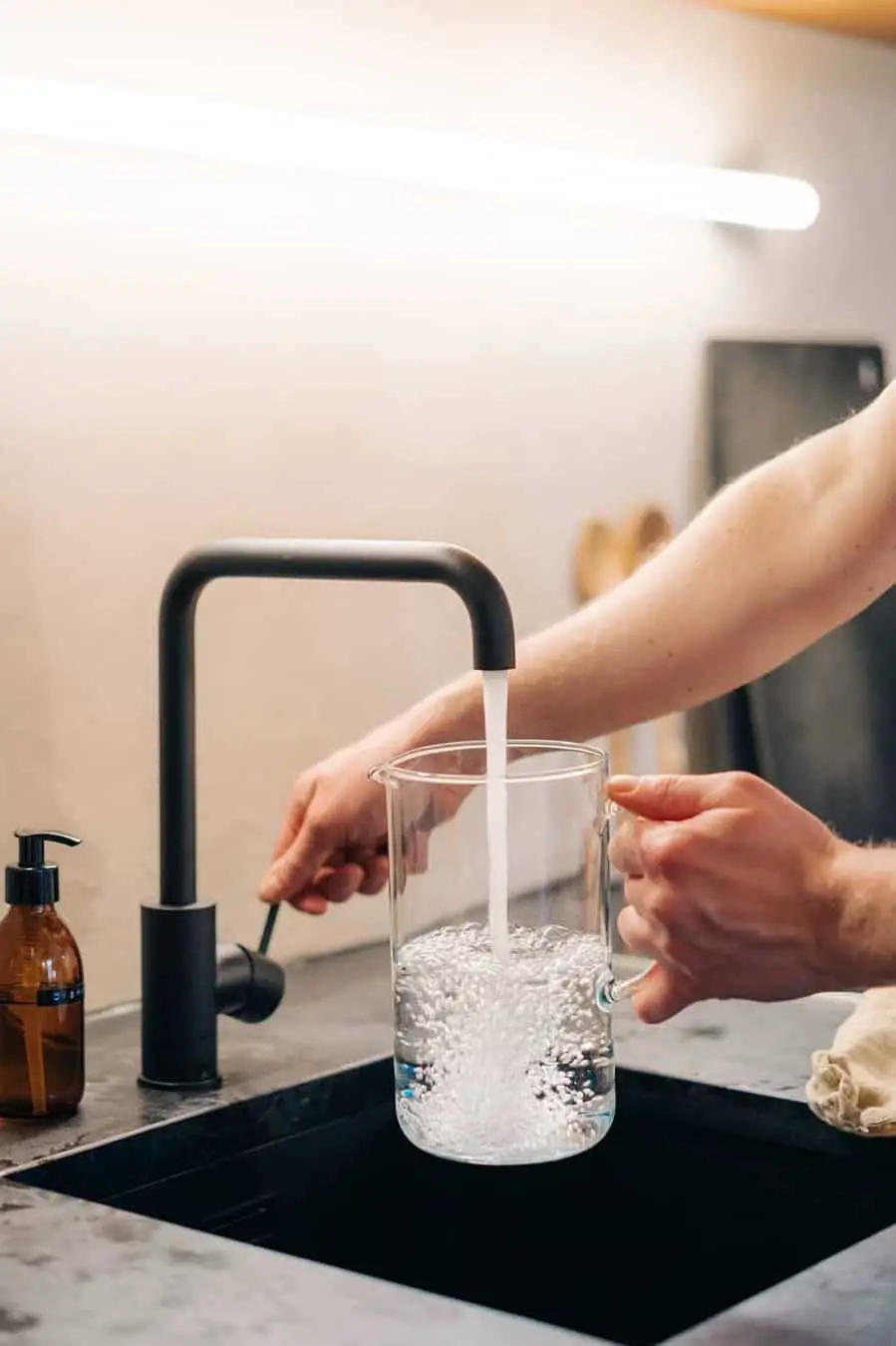
In many places, the primary source of tap water is a nearby river. The water gets processed through basic filtration methods such as flocculation. It helps in coagulating the water particles by adding chemicals. The coagulation process gets the particles to float so that the filter can instantly remove them.
Here, sand filtration is used to filter out the large debris pieces. Alternatively, some of us add chlorine in the water to kill toxic microorganisms and bacteria. This process is widely known as chlorination.
Though EPA has considered tap water to be drinkable, it can trigger numerous health issues. The primary reason is that tap water has chlorine, which should not be consumed by us daily. Though our bodies are can handle it, regular exposure of chlorine can lead to cancer or other severe health complications.
Another significant risk of tap water is the presence of lead in the water pipes, which supplies water to your residence. Both Chlorine and Lead are highly carcinogenic, and we should stay away from them.
For example, fertilizers are commonly used in springs to speed up the plant or crop growth can easily seep into and pollute the freshwater.
You can have access to tap water at no or low cost. The flip side is you need to make a lot of compromises on your health and hygiene while using it. If you don’t want to have additive or chemical-laden food every day, choose your water carefully.
We have a complete guide to remove chlorine from water if you are wanting something more specific.
Purified Water
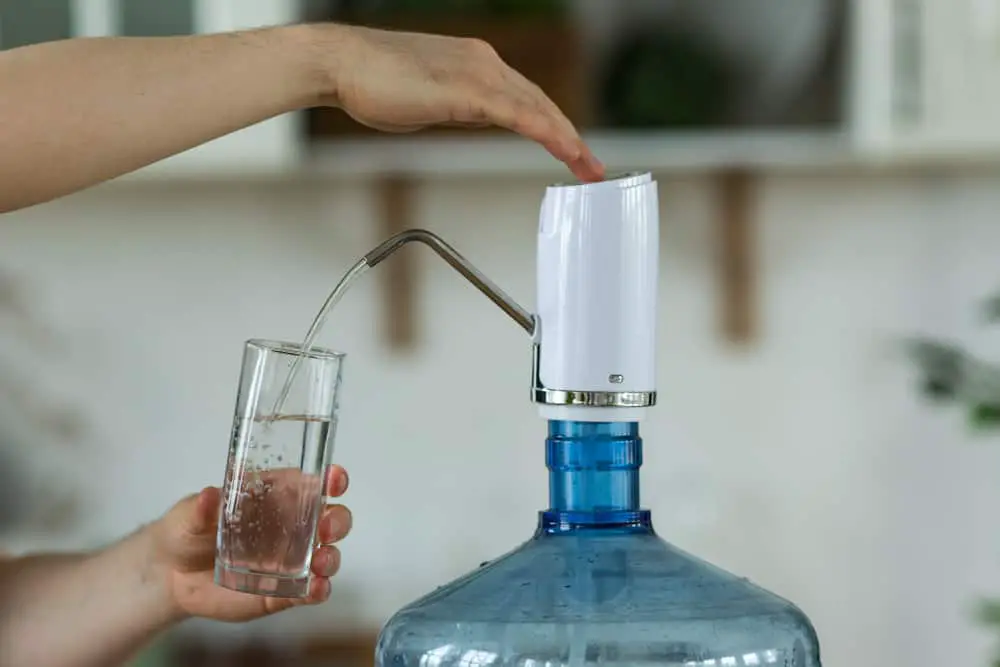
Purified water is the result of the strong filtration process. It typically passes through multiple filtration layers to eliminate harmful pathogens, toxic chemicals, and other carcinogenic elements like lead and copper.
The primary goal of a good filtration process is to reduce most of the dissolved impurities to a negligible level of 10 ppm (parts per million) or even less. This water type has a significantly higher purity level than the EPA regulated tap water.
Purified bottled water is available to the consumers after adhering to stringent health standards directly administered by the FDA (Food and Drug Administration).
Practically water from any source, including tap and groundwater, can be purified using basic and multi-layered filtration process. However basic filtration process can’t remove microbes.
You can choose between different filtration and purification methods to get clean water. One of the most popular ones is using the RO or reverse-osmosis water filter unit along with carbon filter.
The combined unit collects the cleanest water particles through a built-in semi-permeable membrane by effectively eliminating the unwanted elements.
Some houses and restaurants install multi-barrier water filters and whole house water purifiers which don’t need a separate carbon filter. Typically, the water passes through 3 layers of filtration – one-micron complete filtration, UV light treatment, and finally, the ozonation process.
We all should drink purified water as its free of pathogens, contaminants, and toxic chemicals and saves you and your loved ones from potential health risks. It’s free of any stale odor or unpleasant taste caused by VOC accumulations, chlorination, or metal plumbing.
Distilled Water
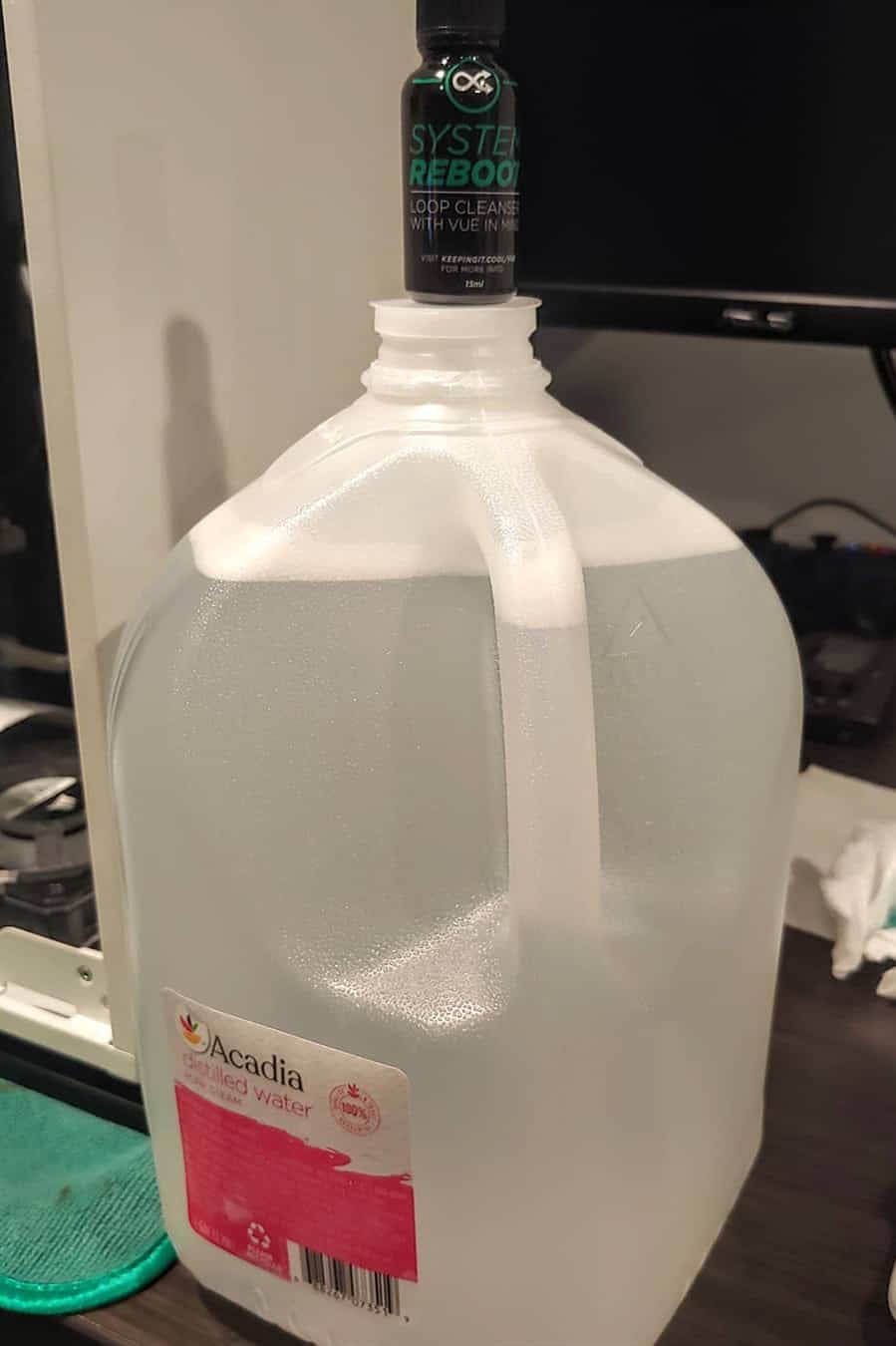
Distilled water is another type of purified water which is rarely used for drinking. The water here is cleaned using a process called distillation. In this process, steam is formed by boiling the water, and then it gets directed to a distinct chamber for condensation of the particles. In the end, you get spotless and pure water.
A water distiller filters out the heavy solids and is highly effective in killing viruses, protozoa, bacteria, and containing impurities.
Spring Water
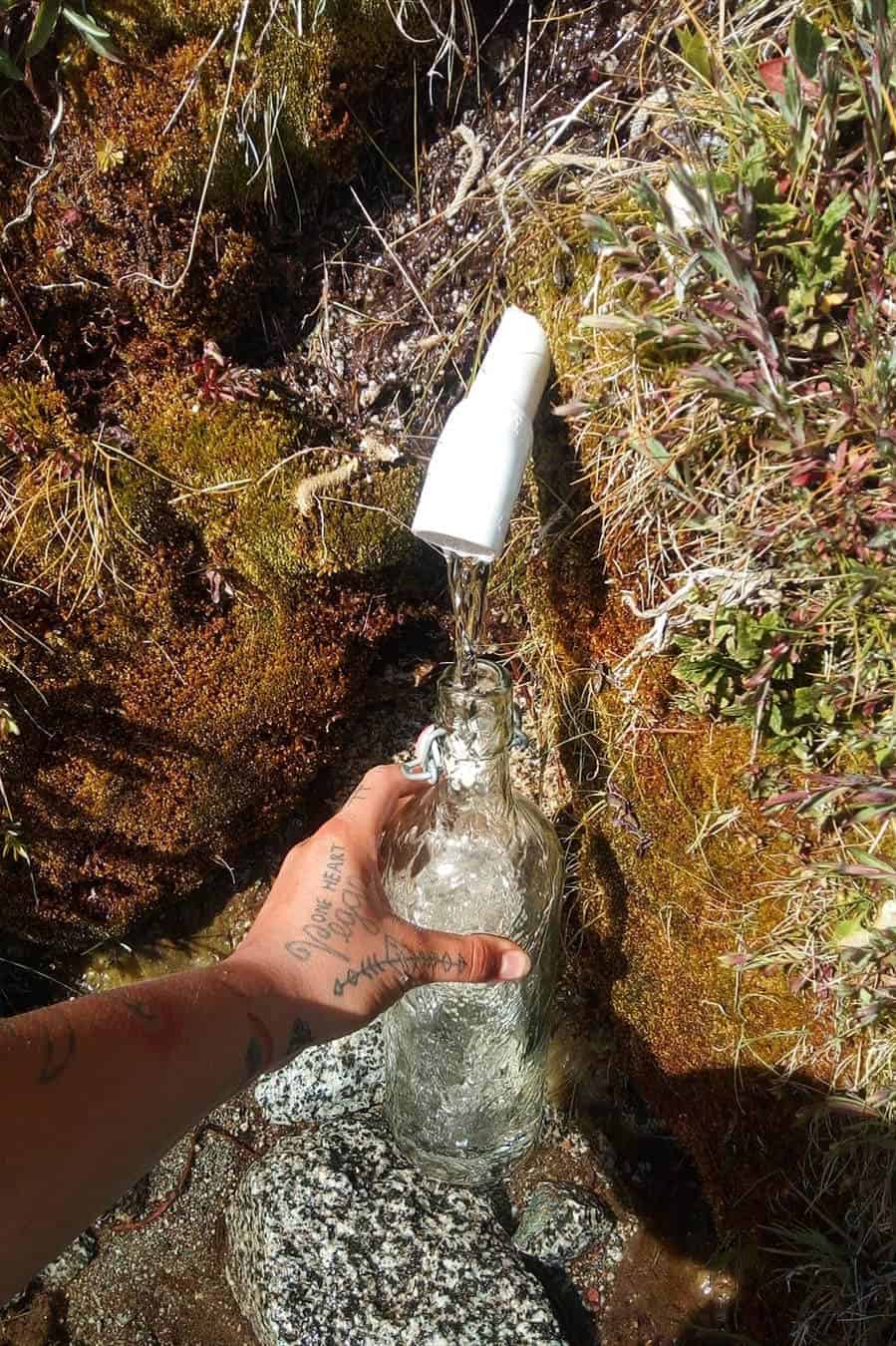
As suggested by EPA, spring water emanates from a vast underground water reservoir and naturally flows through rocky surfaces. Most of the springs are commonly found in hills, mountains, and valleys.
If the water force isn’t enough to rise from underneath, then it needs extraction. The underground source of the extracted water is widely known as artesian well water.
Springs can be commonly spotted in the areas with bedrock, such as limestone. Limestone is defined by the soft texture that allows spring water to traverse through it.
The underground aquifer causes excess water to rise to the surface and form a spring. The water force depends on the amount of excess water accumulation beneath the ground.
Here’s a video that shows the benefits of spring water:
The spring water gets purified through a completely natural filtration process while rising and cutting through the rocks. That’s the reason spring water always looks clear and apt for drinking without the need for any further treatment.
It’s rich in minerals and usually considered safe for household consumption. Unfortunately, due to increased industrialization, spring water often gets exposed to particle pollution and other toxic elements that may spoil its color, odor, and quality.
The bottled spring water must be thoroughly tested, pass through a solid filtration system, and meet the purification standard set by the FDA. Spring water retains all the natural and beneficial minerals even after filtration, unlike purified water. So, with every sip, you feel energized with its refreshing taste.
Spring water is naturally pure and contains all the essential minerals in the right percentage required by our body. It is safe to consume by people of all age groups. Spring water is sometimes used to prepare refreshing beverages with great taste.
Spring Water Vs Purified Water – Which Is Better?
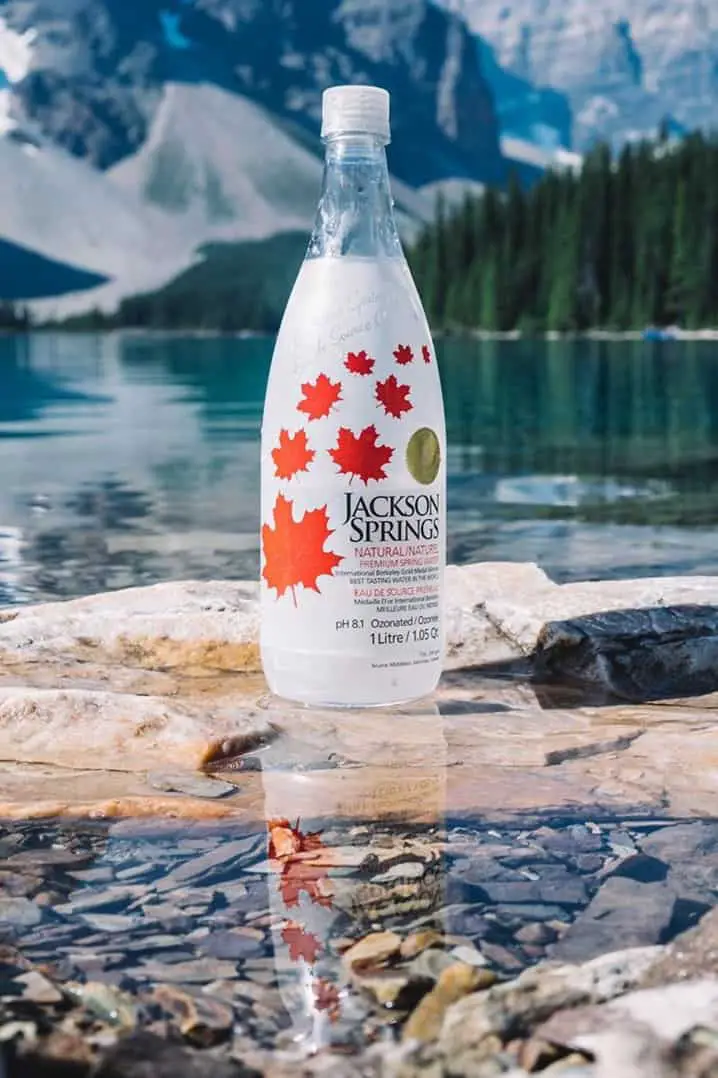
Bottled water is gaining popularity, with most of the Americans consuming over 2 billion gallons of water every year. It can be highly confusing when deciding between purified and spring water, with so many varieties of water available in the market.
Purified and spring water originate from two different sources. In most cases, both these forms of water are safer to drink than tap water. However, your personal preference largely determines the type of your chosen water.
Compare the Standards
One significant difference between spring and purified water is their separate health standards. Purified water needs all its impurities to be restricted to 10 ppm at max.
It’s much higher than the standards laid down by EPA for regular drinking water, such as tap water. However, all forms of purified water need to be free of pathogens and toxic chemicals, but not microbes.
We often confuse purified water with filtered water. However, this information is misleading. All types of water go through some filtration process, but the standards prescribed for purified water are far more stringent.
The strict purification and filtration standard make the purified water completely safe to drink. It can be procured from varied sources, including tap, ground, or spring water.
Spring water has to fulfill the stringent FDA guidelines like every other form of bottled water. Both the EPA and FDA are responsible for drinking water safety.
The FDA sets the standards for bottled drinking water while the EPA regulates the drinking water for the public like tap water. Spring water is not highly distilled as the goal is to retain the naturally sourced minerals.
Bottled spring water needs to be thoroughly tested and made sediment-free to mee the FDA standards. The FDA doesn’t restrict the source of purified water but strongly emphasize to remove all impurities following the strict purification standards.
Enjoy Natural Water
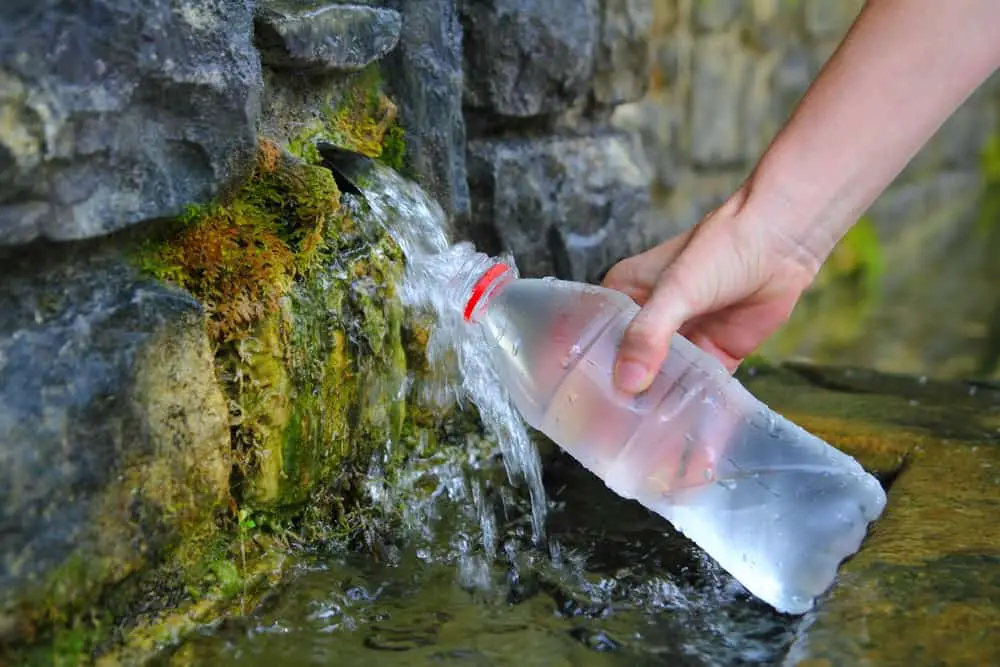
Spring water is sometimes referred to as ground-water, well water or artesian water depending on its source. Spring water is generated from a process known as underground aquifer as defined by EPA. You can even access spring water from a well.
It passes through natural purification processes which makes the spring water drink worthy. So, it’s up to you whether you want further treatment or not. Spring water is usually collected when it reaches the surface or flows to rocky surfaces.
Natural springs originate from the bedrocks and gust through the hills and valleys. Some people, especially the mountain dwellers, consider the naturally filtered spring water to be tastier due to the abundance of rich minerals.
However, the United States Geological Survey refutes this popular belief and states that direct drinking of spring water can expose you to the toxic contaminants.
Here’s a video that shows how reverse osmosis water and spring water are different:
Identify Water Safety Needs
Spring water is commonly found in places with natural rock formation, especially limestone. Limestone’s soft texture makes it easier for spring water to cut through.
The creation of spring has the same concept as the spilling of water from an overfilled bucket. When an underground aquifer is crammed with excess water, its pressure makes the water breaks through the surface.
Spring waters are often considered naturally filtered through rocks. However, its color gets affected as it extracts mineral deposits from the soil.
Spring water is safe to drink and digest with no further treatment, but no one can guarantee water quality. Bottled spring water needs to be lab tested and freed from sediments to satisfy strict EPA standards.
Purified water has a higher purity level than any other form of water, such as ground water, spring water, or tap water. You can drink whichever type you prefer or readily available to you. However, the simple fact is that purified water is safer to drink than spring water as it undergoes the multi-layered purification process.
Some of us may like and are used to the refreshing taste of spring water due to its built-in mineral composition. Others may prefer drinking purified water, which gets filtered through multi-layered water purification systems installed in workplaces or homes.
